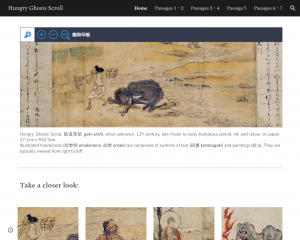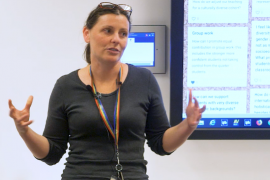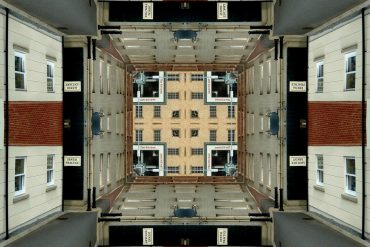The dissemination of Enlightenment ideas during the 17th and 18th centuries was fostered by a ‘Republic of Letters’. The greatest thinkers of the day engaged in the painstaking process of hand copying manuscripts before sending them across continents and oceans aboard notoriously unreliable postal ships. Today, the dissemination of ideas is infinitely more sophisticated: easier, cheaper, and multisensory. We all carry HD video cameras; we can live chat with someone in Mongolia while simultaneously confirming airline tickets and ordering take-away. And yet, much of the work produced by even our most advanced students remains tethered to the formats and rubrics of the 18th century. As a humanist, I will never claim that essay-writing is no longer important. It certainly is. But I’ve come to believe that we must go further and leverage newer modes of knowledge dissemination to make learning a creative experience.
And yet, much of the work produced by even our most advanced students remains tethered to the formats and rubrics of the 18th century
If the foundations of our teaching are sound, more advanced students should be able to repackage what they’ve learned and project it into the public sphere. Even at the undergraduate level, they can start making independent contribution to the shared knowledge of society and, at the same time, create something interesting to show for their efforts, something they can share with their families, prospective employers and scholarship committees.
It’s this creative agenda that drove my design of senior assessments over the past several years in Japanese Studies and Asian Studies. To my great satisfaction, the results have been astounding. My students are building websites that are not merely creative, informative and visually stunning, some have been adopted as teaching materials at respected overseas institutions. The most recent examples come from a third-year Classical Japanese unit (JPNS3111). Not only is it the only course taught on Japan’s premodern language in the southern hemisphere, with an enrolment habitually over 30, it is the largest unit of its kind outside of Japan itself.

Allow me to introduce the assessment design and execution. After learning the technical skills necessary to read and interpret difficult, handwritten documents from the premodern era, students produced parallel, annotated translations of one text in particular. For example, this semester, we focused on a 12th-century Buddhist sutra about the sad plight of karmic beings trapped in the realm of ‘hungry ghosts.’ Next, they engaged in the satisfying task of mapping textual verses onto historical illustrations of the same sutra. We did this using the annotation function built into the site easyzoom.com, which I encourage colleagues to explore. It enables individuals and teams to ‘peg’ text to high resolution images, producing visually stunning, user-friendly interfaces that can be shared and incrementally improved. In the final step, students transposed their collaborative work onto an individual website hosted by Google Sites. Not only did they produce high quality work (which isn’t unusual at our institution), but the unique medium meant that the products of their learning immediately became part of the public sphere, accessible to anyone on the Internet. This public element inspired an extraordinary level of effort. By the end of the semester, I could see that it had also generated enormous pride. Even a cursory glance at some of the sites will show you why.
Take, for example, the work of Kelly Zhang (https://bit.ly/3K0AUN4). Appearing on the syllabus for a course at Princeton University, it has been accessed over 1000 times. Bianca Bigay’s site (https://bit.ly/3QTeoI8), which demonstrates a keen capacity for blending traditional scholarly sources with new digital tools, was featured in a lecture by academics at the National University of Singapore. Finally, please check out Jackson Tse’s work (https://bit.ly/3K4DnpD). The treatment he gives to embedded Buddhist symbology draws effectively on the fields of religion, art history, and classical language.
These are just a few examples of creative projects that deserve great praise. I hope they will inspire colleagues to experiment with similar initiatives that make it possible for students to push their knowledge into the public sphere and to put on display what they’ve learned.





